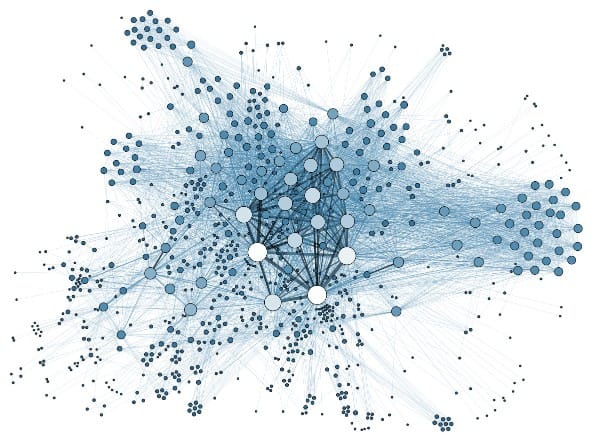A power shift?
The digital transformation in the oil industry

Once upon a time, around 30 years ago, the oil industry was at the forefront of technological innovation, pushing boundaries with creations borne out of necessity, such as digital well logs, electrical submersible pumps and 3D seismic imaging tools, which use sound waves to create a 3D image of geological formations. In years following, the focus shifted. As oil prices skyrocketed in 2011, the aim became maximizing production and, in relative terms, technology took a backseat . However, with oil prices currently at $72/barrel , the narrative has shifted again. The players in this tumultuous market have started looking to new technologies, driven by the need to become more efficient in order to remain profitable. But as companies embark on this digital transformation, a natural question emerges: How will this affect the people working there? Is power being transferred from the people to the latest technology?
An example of the industry’s latest endeavour to embrace technology is BP’s partnership with Beyond Limits, an American artificial intelligence company based in Los Angeles. The aim is to utilise cognitive artificial intelligence (AI), a system that uses models to simulate human reasoning when faced with complex problems by ‘learning’ how geologists and petroleum engineers think; it then mimics their approach when faced with challenges. The benefits are huge – AI can catalogue unused ideas from discussions between engineers, it can bring up relevant suggestions when a problem needs to be solved quickly and, because it has been trained by experts (who will at some point retire), it can digitally store their knowledge and expertise for the benefit of future generations. Does this mean that fewer engineers will be needed in the upstream sector in the future? According to the Journal of Petroleum Technology, “many analysts do not see the mass replacement of human engineering talent on the immediate horizon.” This perhaps implies that although the transfer of power from people to technology is not happening right now, it will inevitably become the reality of the future. The graph shows that, post-oil price collapse, the number of oil rigs has increased substantially again, a trend not entirely echoed by industry employment figures. Meanwhile, the production figures show a near-steady increase. Thus, a conclusion that one can perhaps draw from this is that digital transformation has already had some impact in terms of productivity and efficiency on the oil industry; clearly, higher production levels are being achieved by a smaller workforce. However, the CEO of Beyond Limits puts forward a different perspective: “We are creating a collaboration between man and machine”, he says, “to amplify human talent”. Perhaps one could then view this shift not as power to the people, but as the sharing of power between people and technology.
Anadarko is another company undergoing a technological transformation; it now employs almost 20 data scientists in its Advanced Analytics and Emerging Technologies group. Other members include geoscience and engineering experts. The advantage of such a collaboration is immediately obvious – it increases knowledge across all disciplines and promotes creativity. The team aims to test new concepts and accelerate technological development to enhance “competitive advantage in the exploration and production space” . An example of such a project is the integrated production surveillance and optimisation platform, IPSO. IPSO, which breaks down and filters data like pressure and temperature changes in wells into digestible and easy-to-monitor bits, was an unprecedented success when it was deployed for use in the Gulf of Mexico; it was fully operational 97% of the time in the first 6 months . To continue such breakthroughs, more data scientists are needed, yet the Journal of Petroleum Technology comments that “the upstream industry has openly acknowledged in recent years that it is not the most attractive sector for data scientists” . Thus, it seems that emerging technologies can play a role in encouraging such recruitment and multidisciplinary teamwork, a sure sign that power still remains with the people.
Another major driving force for these investments in technology is safety. An article in Chemical Report reads: “Artificial intelligence can eliminate the health and safety concerns by helping the operators to control critical tasks through automated systems without the need for human presence” . Obviously, getting people off platforms has many more benefits than just eliminating health and safety concerns; labour costs are drastically reduced and other costs such as helicopter use are eliminated. To reduce these ‘inefficiencies’, technologies such as the Iron Roughneck have been rolled out. This connects drill pipe segments, a dangerous and repetitive task previously done by hand. Drones can collect data in five days; it takes rope-access technicians about eight weeks to undertake the same amount of work . So, what happens to the workers when these powers are transferred from people to automation? It’s estimated that automated drilling rigs could reduce the workforce on a rig by up to 40% in the future. However Chris Robart, Ambyint’s president of US Operations takes a different view: “We are freeing up individuals to go do other things, like think about new technology, troubleshoot failed equipment, deal with workovers, or new well designs.” Clearly, these new tasks require a completely different skillset to the labour-intensive jobs that AI and automation are replacing.
From Iron roughnecks to drones to the applications of AI, the oil industry has certainly embraced this era of technology, focusing on increasing efficiency and improving safety. This additional power to technology though, comes with additional costs to the people of the workforce. For the foreseeable future at least, oil rigs will not all become fully automated. But we are witnessing the birth of shared power, as machines become increasingly better at tasks humans were employed to do. Where this power shift leads the oil industry, only time will tell.
Taken from the 5th Edition of the Energy Journal: Power to the People. The Energy Journal is a biannual publication about current affairs in the energy industry, written by Imperial College, LSE and UCL. Want to read more? Go to: energyjournalonline.wordpress.com








